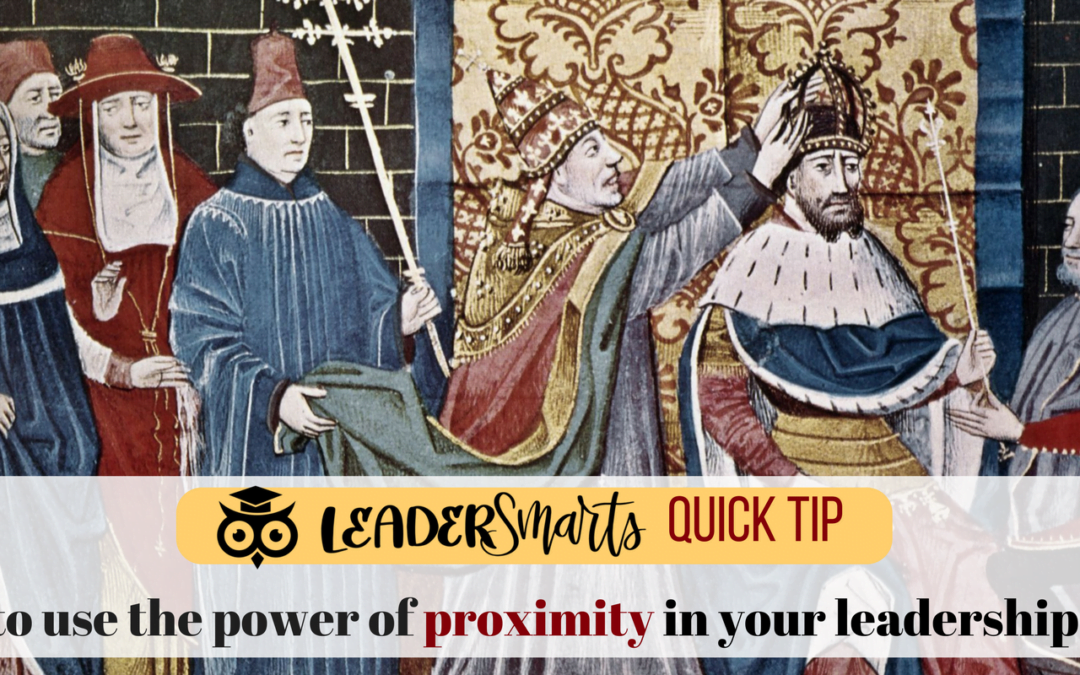Did you know that influencing seating arrangements or degrees of physical proximity can be a power tactic of strong leadership? Better be more thoughtful the next time you walk into a meeting!

Written by
Karan Rhodes
I just finished binge watching two of my favorite series on Netflix – The West Wing and The Tudors, and was fascinated how the leaders in both series manipulated who was allowed to be near them during meetings, in order to send clear messages of who they trusted and who they blackballed. In their work environments, proximity to the leader was golden.
Did you know that influencing seating arrangements or degrees of physical proximity can be a power tactic of strong leadership?
Allow me to give you an example: In medieval times, when kings sat on their throne, everyone knew which members of the royal court were the most powerful based on how close they stood to the king. Actually, the term “right hand man” is based on the fact that the #1 advisor of the king was always close at hand to help him rule. We don’t use thrones anymore, but we still regard some seats to be more prestigious, and automatically reserve them for influential people or your most closest advisors.
Back when I worked in Corporate, I knew that in order to be considered a respected leader at the table, I had to exert the psychological power plays that others did not know. As a result, I used by background in Industrial/Organizational Psychology to my advantage by purposely sitting in the seat next to the senior executive at every meeting. Why? Because the human brain is wired to place more value to those physically closest to the top leader.
Quick Tips About Proximity:
1) Your sitting position or proximity to others affects both your status and association with the rest of the group. Although you may have a ‘natural’ spot that is most suited for your status, know that you can always choose another seat in the seating arrangement to manipulate how others interact with and perceive you. For instance, if there are times when you need to be perceived as part of the group vs the senior leader’s right hand person, you should strategically choose a seat midway between the leader and the other end of the table.
2) Always remember that you have very limited power over the feelings and thoughts of others. You have to always earn their respect and trust. While you can try to position yourself in a way that you think serves you best – sometimes people won’t cooperate with you. This will be reflected by their body language and their choice of seat in relation to you. Don’t sweat it, you cannot control everything… just do your best.
3) Consider these suggestions related to proximity, based on the desired outcomes of meetings that you personally lead:
- A round/circular seating layout is ideal for peaceful and cooperative discussions – everyone feels equally involved. It’s also a great seating arrangement for brainstorming, because it encourages a free flow of ideas by everyone.
- A rectangular seating layout can invoke a mood of formality, competition or confrontation, as most people will sit opposite to each other with the table as a barrier between them. You frequently see the most senior leader commandeering one of the short-ends of the table, which allows them a vantage point over others participants. More collaborative senior leaders frequently try to sit in the middle of the table.
- Need to have a 1-on-1 or small group pow-wow? Consider choosing a location that sits you in a corner. Chatting in a corner is most comfortable for relaxed and informal conversations. It allows all parties to maintain their comfort zone and is not likely to be perceived as too direct and aggressive. Try to sit side-by-side with the person(s) with whom you most want to collaborate. Sitting next to someone is one of the most intimate, collaborative non-verbal position you can express.

If you want to be perceived as more influential – use your new knowledge about proximity tactics to help put yourself in a power position during meetings. By being more intentional, you can naturally improve the reputation of your leadership brand in the eyes of others.
Becoming proximity-savvy helps to develop your Executive Presence and Stakeholder Savvy competencies, 2 of the 7 competencies that will ultimately help you “lead at the top of your game.”



